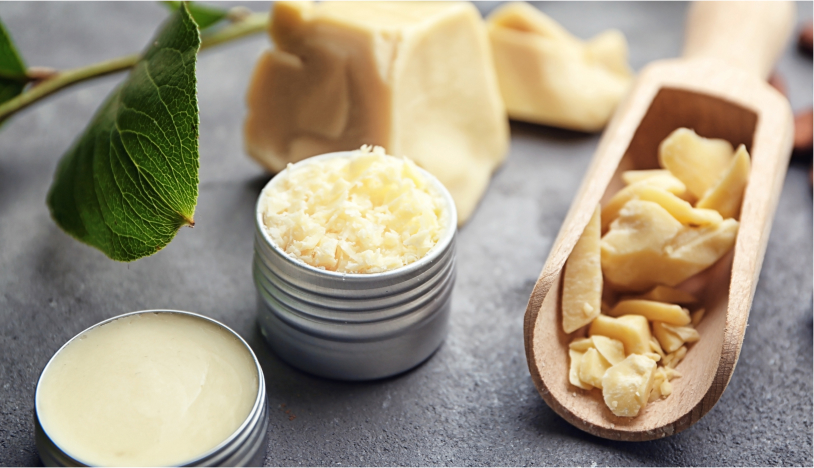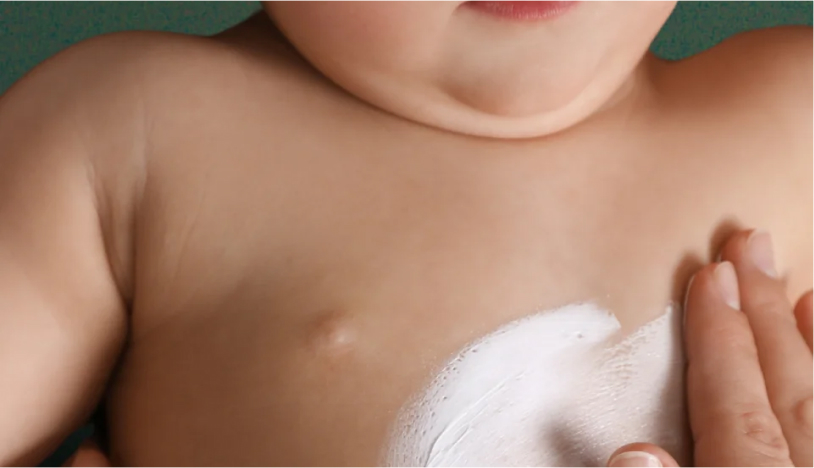Atopic Dermatitis (AD) is becoming an increasingly common condition, affecting about 20% of children worldwide, especially in highly developed countries. Nearly 90% of cases are diagnosed before a child reaches the age of 5, with infants up to 6 months old making up a significant portion of those affected. How can you recognize the symptoms of AD, and when should you consult a healthcare specialist?
Amidst the plethora of advertisements, films, and social media profiles targeted at young parents, one can't help but notice the images of smiling babies with perfectly smooth and problem-free skin. However, in reality, most infants in the first months of their life deal with various skin imperfections, such as pimples, erythema, acne, or allergic reactions. This phenomenon is a natural part of the infant skin development process, whose system is still immature.
To the relief of parents, most skin problems are transient and disappear over time on their own. Babies may experience various skin changes, but most of them result from their skin adapting to the new environment. Nevertheless, there are cases where certain imperfections persist longer or even permanently. Atopic dermatitis, also known as eczema or atopic eczema, is an example of such a lasting condition.
What is Atopic Dermatitis?
Atopic Dermatitis is a dermatological condition that is chronic and recurrent in nature. The most characteristic symptoms include itching, dryness, and skin irritation, which intensify under the influence of various environmental factors. What causes this disease? Specialists have not yet definitively determined the source of the condition, but it is most likely of genetic origin. It is estimated that if a child's parents suffer from AD, there is a 70% risk that the child will also develop skin changes. However, importantly, the absence of such a condition in the family's medical history does not mean that a child will not exhibit symptoms of AD! Currently, it is one of the most common dermatological diseases in children and is often considered a modern civilizational disease.
First signs of AD in children - what should you be concerned about?
Diagnosing atopic dermatitis in babies and children is not straightforward, as initial symptoms are often confused with other conditions. Especially since an infant's skin is very sensitive and can react with redness or rash to various external factors - such as bath liquids, moisturizing oils, or laundry detergents, as well as foods eaten by breastfeeding mothers or formula milk. In that case, what are the most characteristic symptoms of AD in children?
The first symptoms of AD in babies and children usually include:
- Dry skin - the child's skin may appear rough, flaky, and devoid of moisture, which in turn facilitates the cracking of the epidermis.
- Redness - areas affected by AD often show redness, which can be a sign of inflammation. Erythema is particularly visible on fair skin, while in darker skin tones, it may look more like dark brown or purple discolouration.
- Itching - intense itching associated with AD can negatively affect a child's sleep. Situations where a child has difficulty falling asleep, wakes up at night due to itching, or demonstrates general discomfort related to the skin condition are concerning.
- Pimples - with AD, pimples can appear on the skin, which are small, often fluid-filled blisters. In infants, they typically occur on the cheeks, earlobes, and forehead, though in extreme cases, they can appear all over the body. In older children (between 3 to 12 years old), blisters and skin changes are most commonly found in the bends of the knees and elbows, as well as on the backs of hands and feet. Pimples can burst and form crusts and may also become infected, causing the epidermis to resemble a hard, reddened crust.
- Weakened hair - in infants with AD, not only the appearance of the skin can change but also the hair. The strands become weaker, thinner, and more brittle.
AD in a child - when to see a health care specialist?
The diagnosis of atopic dermatitis largely relies on observing the symptoms present in the child, as well as analysing environmental factors (including exposure to potential allergens) and reviewing the family's medical history. In the case of any concerning symptoms, it's advisable to first talk to a midwife or paediatrician to have them professionally examine the skin changes. However, if the child presents with strong erythema, numerous pimples, and irritations, and someone close also struggles with AD, a visit to a dermatologist or allergist should be arranged as soon as possible.
Fighting AD in children often feels like a never ending battle, and it keeps many parents worldwide up at night. Especially since the available medications only help alleviate the symptoms of the disease, but are unable to completely eliminate it. Thus, proper skin care throughout the year and choosing products that protect and strengthen the skin on many levels are essential. The best choice would be natural emollients, free from artificial additives, preservatives, or dyes, and based on butters and plant oils. An example of such cosmetics are Mangomica lotions, creams, and cleansing emollients with a high content of unrefined mango butter.






